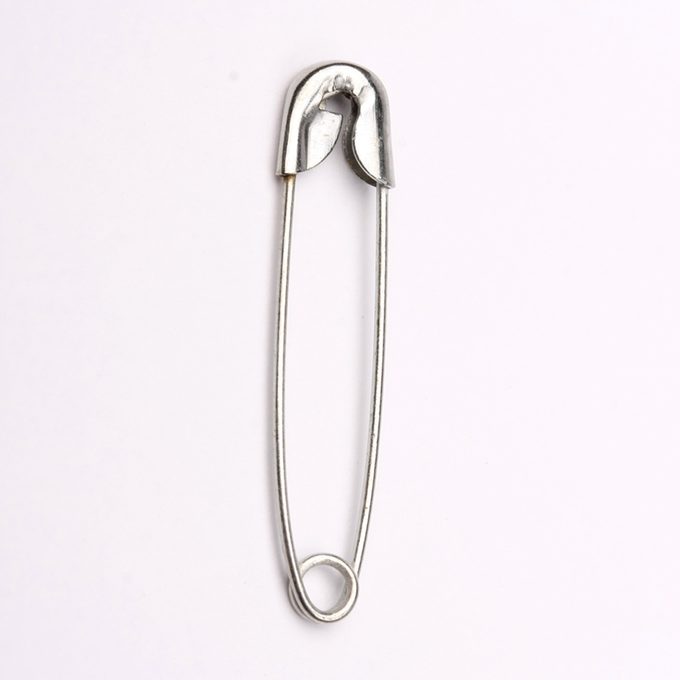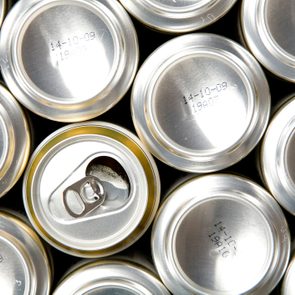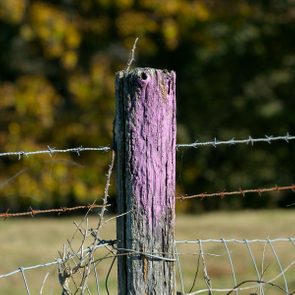You'll never look at a humble safety pin the same way again

Here’s What the Hole in a Safety Pin Is Really For

“These things are so great and have so many uses in so many areas that I don’t even have to market them. Customers just find me,” says Larry Schwartz, who’s been in the safety-pin business for more than 20 years. And he’s not exaggerating. Safety pins are everywhere—sewing kits, first-aid boxes, diaper bags—and chances are, you have a few lurking in a junk drawer or buried at the bottom of your purse right now.
Fun fact: In high school, I pierced my navel with a safety pin. (Do not recommend.) These days, I prefer to wear them as earrings—I’m actually wearing gold safety pins in my ears right now. So I was extra excited to chat with Schwartz, the CEO and owner of Wholesale Safety Pins, a company built entirely around this tiny, trusty tool we all use constantly but rarely stop to appreciate.
Until now.
Most of us probably haven’t spent much time pondering the anatomy of a safety pin. We just grab one in a wardrobe emergency—a busted zipper, fallen hem, rebellious bra strap—and hope we don’t stab ourselves in the process. But the next time you’re fumbling with one of these humble heroes, take a closer look. See that little hole in the coil? It’s not a flaw. It’s not just a quirky design flourish. It’s actually the secret to the safety pin’s superpower.
“After I got your question, I actually walked down to the factory—one of the last domestic safety-pin manufacturers in the U.S.—and talked to the guy at the machine that makes the pins to find out,” Schwartz says.
What he discovered is surprisingly fascinating. Read on to learn the function behind that tiny hole—and more quirky facts about the unassuming safety pin.
Get Reader’s Digest’s Read Up newsletter for more common curiosities, humor, cleaning, travel and tech all week long.
So why do safety pins have a hole?

Actually, there are two holes in a safety pin: one at the top where it latches, and one at the bottom inside the coil. And yes, both serve a purpose beyond just looking like tiny design features. “The hole at the top, where it latches, takes some of the pressure off so you can flex the pin more easily when opening and closing it. The hole also allows for the sharp tip of the pin to go in and out of the protective metal shield at the top,” explains Schwartz. “The hole at the bottom, inside the coil, is the spring mechanism that makes it pop open.”
I know, I know—safety pins don’t exactly scream high-tech engineering. But there’s more design in that tiny metal twist than you might realize at first. For instance, that bottom hole is also where the wire is anchored during the manufacturing process, before being twisted into that tight coil.
But wait, there’s more. (Cue dramatic infomercial voice.)
What is the hole in the safety pin used for?
Once the coil is created, that hole continues to serve a purpose: maintaining spring tension. That’s the magic that lets a safety pin snap shut and stay shut, instead of snapping open and turning your missing button situation into an emergency tetanus shot situation (true story).
Without the tension created by the coil—and reinforced by that bottom hole—the pin wouldn’t hold itself closed. It would just be a stabby wire with commitment issues. Not exactly helpful when your blouse is holding on for dear life in a job interview (also a true story, sigh).
“The design really is that genius and that simple,” Schwartz says. And unlike, say, the cotton in pill bottles, it is still an essential component of the safety pin.
What’s the origin of the hole in a safety pin?
The modern safety pin’s genius design dates back to the 19th century, with a man named Walter Hunt, who had a problem to solve. Specifically, Hunt was reportedly trying to pay off a $15 debt (relatable), and in 1849, he didn’t have many options. As the story goes, one day, deep in thought, he was fidgeting by twisting a piece of wire around and discovered he’d made a loop that he could open and close. And that’s how the safety pin was born. He drew up a patent for his invention and sold it for a few hundred bucks, certainly unaware that it would become an MVP for centuries to come.
The hole in the coil has been in the design from the beginning because it’s integral to how the whole mechanism works. That said, as safety pins have evolved over time, there have been some new takes on the design, and not all of them have the bottom hole.
Types of safety pins
Schwartz offers dozens of different types of safety pins—many of which you’ve probably never heard of but are quietly doing the Lord’s work behind the scenes in everything from fashion shows to laundry rooms. These little guys are used for hundreds of creative (and sometimes bizarrely specific) purposes. Here are just a few of the most popular:
- Traditional safety pins: The classic. The OG. The pin you think of when someone says “safety pin.” These come in three basic sizes—creatively labeled 1, 2 and 3—and are the standard go-to for household fixes, quick hems, broken straps and last-minute Halloween costumes held together with hope.
- Black safety pins: These are the stealth ninjas of the safety-pin world. “They get used in Hollywood and on photo shoots because they’re invisible on camera,” Schwartz says. The matte black finish keeps them from reflecting light, so stylists and set designers can work their magic without the shine giving away their secrets.
- Steel coilless safety pins: No coil, no snag. These are specially designed without the traditional coil at the end, which makes them ideal for delicate or loosely woven fabrics (think: knits, lace or tulle). They slide through without catching or pulling threads, so your favorite sweater won’t end up looking like it lost a fight with a cat.
- Pear-shaped safety pins: These quirky-looking pins have a bulb at the bottom, making them ideal for tagging and hanging items like buttons, charms or stitch markers. Schwartz adds that they have also become a staple for hanging tags from clothing to make them look a little fancier without poking giant holes in fabric.
- Kiltie safety pins: You’ve definitely seen these in action, even if you didn’t realize it. These are the oversized pins traditionally used to fasten kilts (hence the name), and they’ve made their way into punk fashion, costume design and statement accessories.
- Laundry bag/net pins: These heavy-duty pins are built to survive the wild ride that is commercial laundering. They’re used to keep laundry bags or nets closed during industrial washing cycles—like at hospitals, hotels or gyms—where a regular ol’ safety pin would cry uncle halfway through the rinse cycle. “You have to be a pro to open these,” Schwartz says. “They are very strong pins.”
- Clothing price-tag pins: Also called tagging pins and retail safety pins, these are specially designed for attaching price tags to garments in a way that’s secure but easy to remove. You’ll find them behind the scenes in clothing stores and warehouses.
But whatever type of safety pin you use, take a moment to appreciate that tiny hole. It’s not just a weird little detail—it’s the unsung hero of the whole operation. Kind of like the friend who brings snacks on moving day or the one bobby pin holding your whole messy bun together. Small but mighty.
RELATED:
- Here’s Why People Put Pennies in Flower Vases
- Here’s Why Hotel Sheets Are Always White
- Here’s Why There Are Ridges on the Bottom of Your Freezer
About the expert
|
Why trust us
At Reader’s Digest, we’re committed to producing high-quality content by writers with expertise and experience in their field in consultation with relevant, qualified experts. We rely on reputable primary sources, including government and professional organizations and academic institutions as well as our writers’ personal experiences where appropriate. We verify all facts and data, back them with credible sourcing and revisit them over time to ensure they remain accurate and up to date. Read more about our team, our contributors and our editorial policies.
Sources:
- Larry Schwartz, CEO and owner of Wholesale Safety Pins; phone interview, June 11, 2025
- The Museum of Everyday Life: “Visual history of the safety pin”



